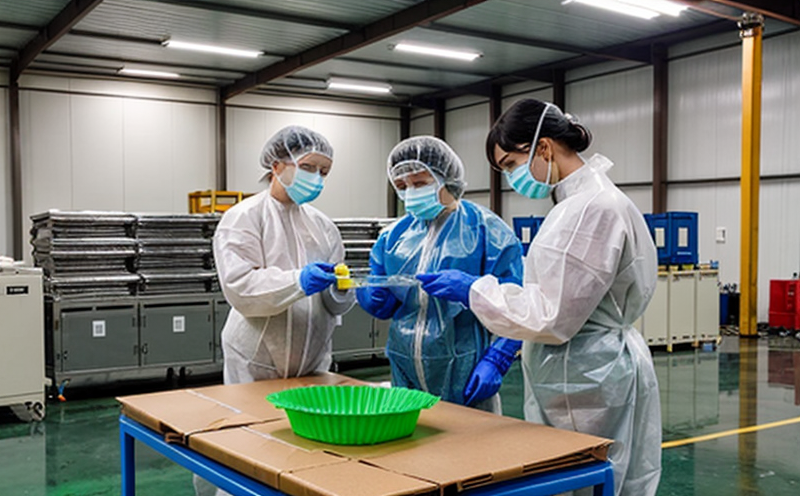ISO 15105-1 Gas Permeability of Plastic Films
The ISO 15105-1 standard is an internationally recognized protocol used to determine the gas permeability of plastic films. This test is essential for ensuring that packaging materials maintain their integrity and effectiveness, especially in environments where gases such as oxygen, carbon dioxide, and water vapor can affect product quality.
Gas permeability testing plays a crucial role in the development of long-lasting packaging solutions across various industries, including food & beverage, pharmaceuticals, electronics, and consumer goods. By accurately measuring how gases pass through plastic films, manufacturers can optimize their packaging to extend shelf life, maintain freshness, or prevent contamination.
The test is particularly important for barrier materials used in high-barrier packaging applications such as vacuum-sealed containers or those intended for long-term storage. It ensures that the packaging remains effective over time and under various environmental conditions, thereby protecting the integrity of the product within.
In this service, we employ advanced laboratory equipment to conduct precise testing according to ISO 15105-1 standards. Our state-of-the-art facilities allow us to simulate real-world storage and transportation conditions, providing accurate results that are essential for compliance with international regulations and industry best practices.
Our team of experts will guide you through every step of the process, from specimen preparation to final report generation. We ensure that all samples are handled with care and precision, using only the highest-quality materials and instruments available.
Scope and Methodology
| Parameter | Description |
|---|---|
| Test Specimen | Prepared plastic films of uniform thickness and dimensions. |
| Environmental Conditions | Controlled temperature, humidity, and gas composition. |
| Test Duration | Standard test duration of 7 days or as per customer requirements. |
| Data Collection | Continuous monitoring using mass loss measurement techniques. |
The testing process begins with the preparation of plastic films according to ISO 15105-1 guidelines. These films are then placed into a controlled environment where temperature, humidity, and gas composition can be precisely adjusted. Over the course of several days, continuous mass loss measurements are taken using specialized equipment.
The results obtained from these tests provide critical insights into the performance characteristics of the plastic film under various conditions. This information is invaluable for quality control teams, R&D departments, and procurement officers who need to ensure that their packaging meets strict regulatory standards and performs optimally in real-world scenarios.
International Acceptance and Recognition
The ISO 15105-1 standard has gained widespread acceptance across numerous industries worldwide. It is recognized by regulatory bodies, manufacturers, and distributors as a reliable method for assessing the gas permeability of plastic films.
Many countries have adopted this standard due to its stringent requirements and consistent results. Compliance with ISO 15105-1 ensures that packaging products meet global quality standards and can be easily exported or imported between different regions without facing regulatory hurdles.
Our laboratory adheres strictly to these international guidelines, ensuring accurate and reliable test results. By choosing our services, you are guaranteeing that your packaging solutions comply with the highest industry standards and are ready for use in any market around the world.
Environmental and Sustainability Contributions
- Eco-friendly Packaging Design: Understanding gas permeability helps in designing more efficient packaging that minimizes waste while still protecting products effectively.
- Energy Savings: Reduced gas leakage leads to better product preservation, which can result in lower energy consumption during storage and transportation.
- Resource Optimization: By optimizing the thickness of films used in packaging, resources are conserved without compromising on safety or quality.
Our services contribute significantly to reducing environmental impact by promoting efficient use of materials. Through accurate testing and optimization advice based on ISO 15105-1 results, we help clients create more sustainable packaging solutions that not only meet current regulatory requirements but also set a benchmark for future improvements.





